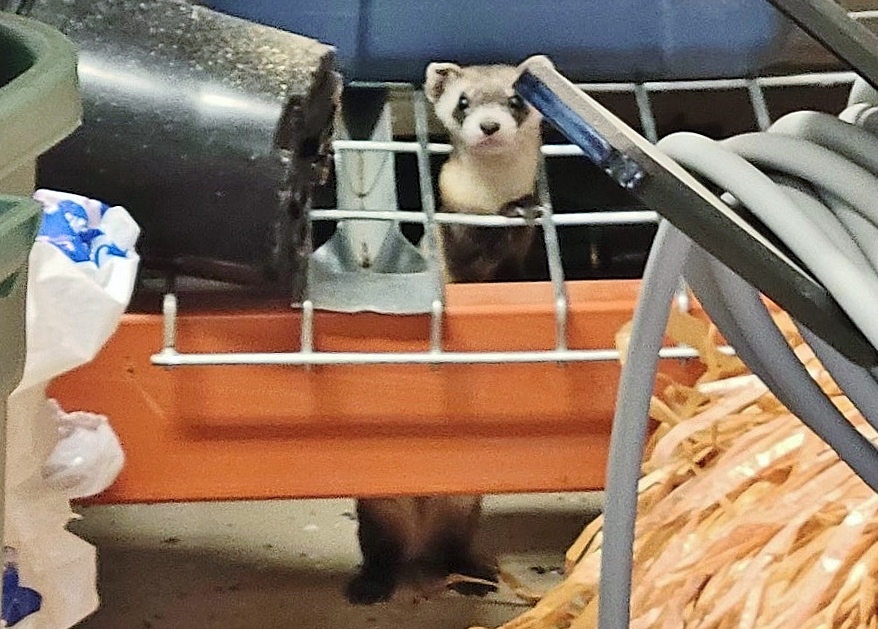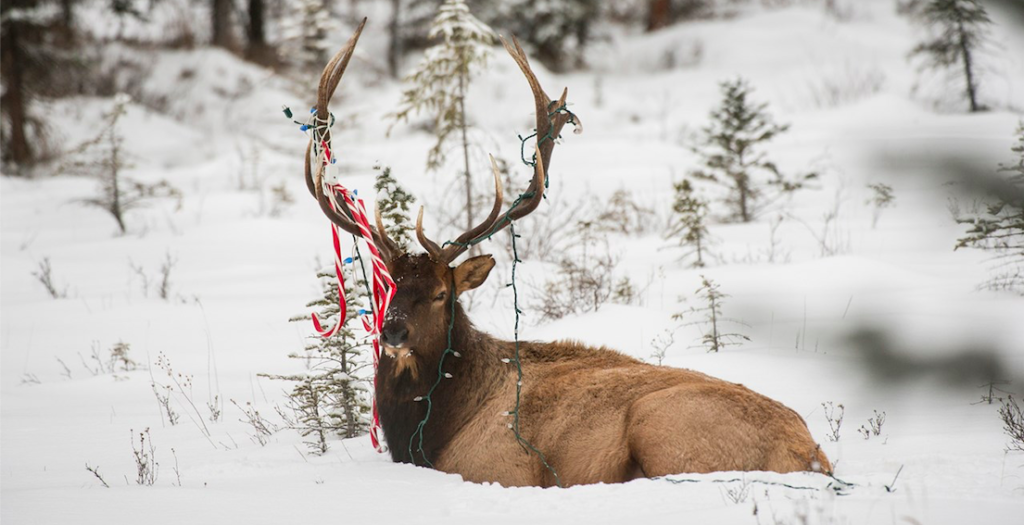It’s considered among North America’s most endangered mammals, if not the rarest such creature on the continent, yet a black-footed ferret recently made its way into the garage of a Colorado homeowner.
The Pueblo West home isn’t far from where Colorado Parks and Wildlife have been releasing the elusive critter to a prairie dog colony as part of a massive conservation effort.
“We don’t know exactly why this black-footed ferret left the colony,” Ed Schmal, a conservation biologist with Colorado Parks, said in a statement. “We put them into prairie dog burrows but they may not stay. Sometimes they scramble around the colony to find the right home. This one might have gotten pushed out by other ferrets and it went looking for a new home. We really don’t know.”
But it did prompt a major rescue effort last Monday night when the homeowner found a ferret rooting through the garage.

By the time CPW Officers Cassidy English and Travis Sauder arrived, the homeowner had coaxed the ferret into a box, according to Parks.

Once captured, wildlife officers wanted to find out exactly what animal they were dealing with.
Since 2013, more than 120 black-footed ferrets have been released into the Walker Ranch region by Parks and the U.S. Fish and Wildlife Service. But efforts were stopped during the pandemic — partly fearing humans might introduce the virus to the species — but resumed just three weeks ago with the release of nine ferrets.
All of the released animals have a microchip implanted between their shoulder blades.
It turned out, this was one of the nine just released.

“Photos of the ferret were sent to U.S. Fish and Wildlife Services biologists who determined the garage-crashing ferret appeared healthy and could be taken back onto the prairie dog colony and re-released,” Parks said.
And so, officials took the wayward ferret back to the ranch.
Watch video of the black-footed ferret release taken by @COParksWildlife Officer Cassidy English after she and Officer Travis Sauder hiked deep into a prairie dog colony in the dark Monday on the Walker Ranch near Pueblo West. (3/4) pic.twitter.com/fWfryRFay7
— CPW SE Region (@CPW_SE) November 10, 2021
That’s where it was released in the dark — far into the prairie dog colony — and far away from people.
Hopefully, it stays in the wild for good this time.
More video of an endangered black-footed ferret peeking out of a prairie dog burrow after it was re-released Monday night. It was among 9 black-footed ferrets released by @COParksWildlife biologists 2 weeks ago in ongoing efforts to recover the rarest mammal in North America. 4/4 pic.twitter.com/g6QWu1CeCi
— CPW SE Region (@CPW_SE) November 10, 2021
Parks has only received one other report of a black-footed ferret leaving the ranch, but it didn’t get into a human building or structure like this one did.
“This is extremely rare,” Schmal added. “Black-footed ferrets are nocturnal and extremely shy. For some reason, this one left the colony and was seeking shelter. We’re just glad it appeared healthy, not starving or sick, and we were able to capture it and return it to the colony.”
Imagine going into your garage and finding this little black-footed ferret looking at you. But don't be fooled by those eyes. This little animal is wild and will ferociously defend itself when it feels threatened, as @COParksWildlife officers found out during the release. (2/4) pic.twitter.com/pyb2jmRBPF
— CPW SE Region (@CPW_SE) November 10, 2021
The black-footed ferret became extinct in the wild in the 1980s due to habitat loss — and loss of its main food source — prairie dogs, which were poisoned as nuisance animals on agricultural land.
Plague and canine distemper also worked to cut down the ferret populations from southern Canada to northern Mexico.
“The last remaining 18 wild animals were brought into captivity between 1985 and 1987,” according to the International Union for Conservation of Nature, which maintains a Red List of threatened species.
“A successful captive-breeding and reintroduction programme has been running ever since, and,
as of 2008, populations have been reintroduced to 18 sites. Few species have got so close to
extinction and recovered; nonetheless, conservation efforts will need to continue if the future of
this species is to be secured,” the organization said.



